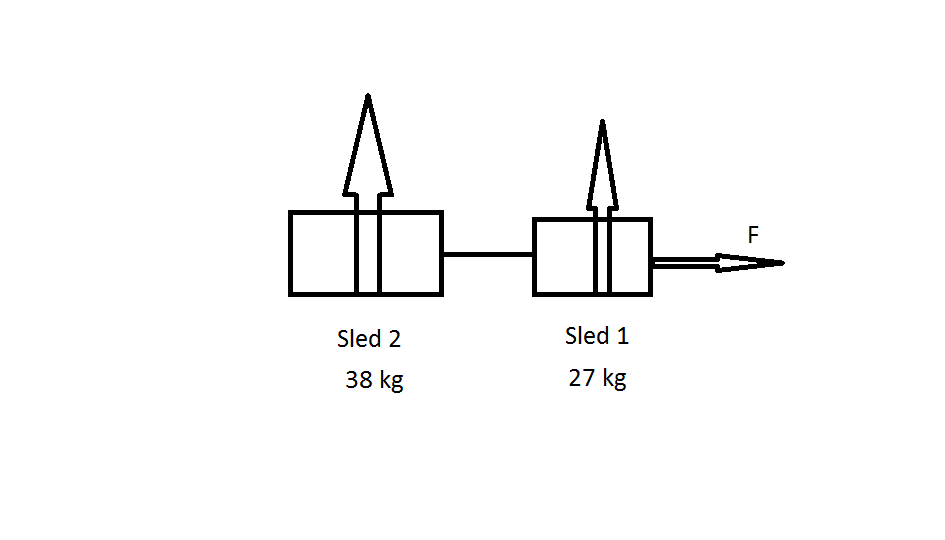Can someone help verify the answer?

I obtain 58.1 N for b, can someone verify if my answer is correct?
I obtain 58.1 N for b, can someone verify if my answer is correct?
1 Answer
(a)
(b)
Explanation:

(a) Force of static friction which needs to be overcome to move the sled 1
where
Inserting given quantities and taking the value of
Similarly, force of static friction which needs to be overcome to move the sled 2
As both the sleds are tied with the help of rope, any force applied by the adult on sled 1 gets transferred to sled 2 via rope. We see that sled 2, which is heavier of the two, will not move unless its force of static friction is overcome.
This implies that greatest horizontal force an adult can apply on sled 1 without either sled moving is
(b) Magnitude of tension in the rope between the sleds when the adult applies this greatest force must be equal to magnitude of
